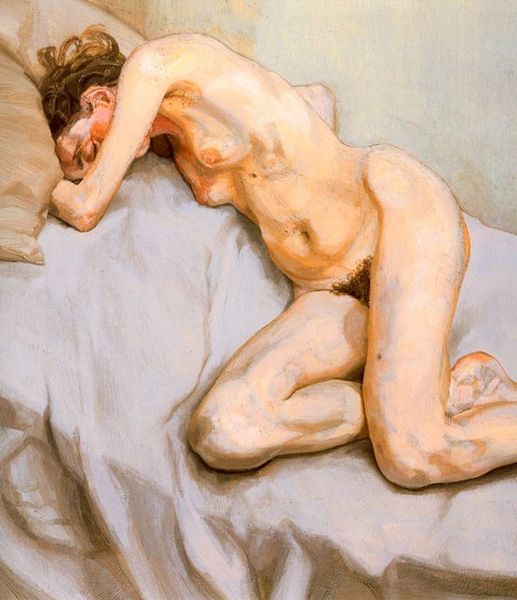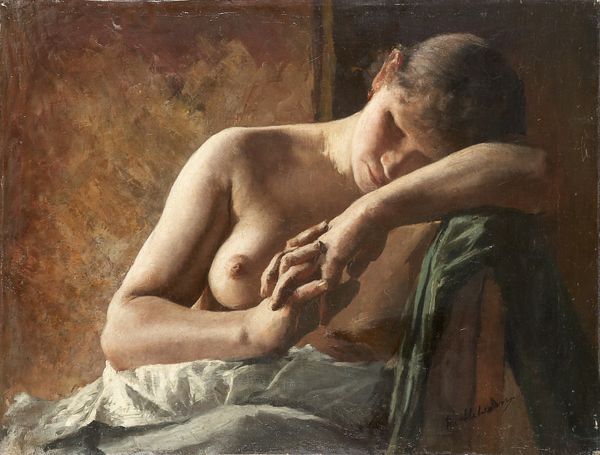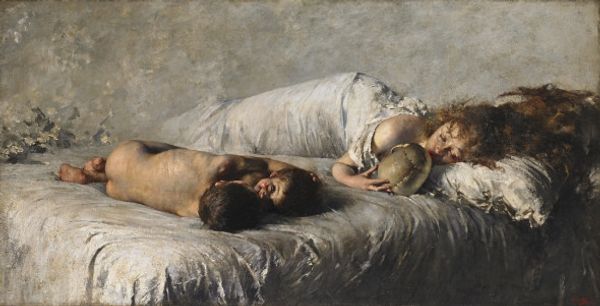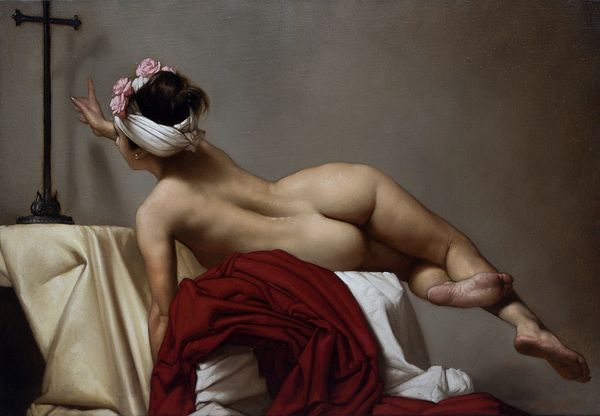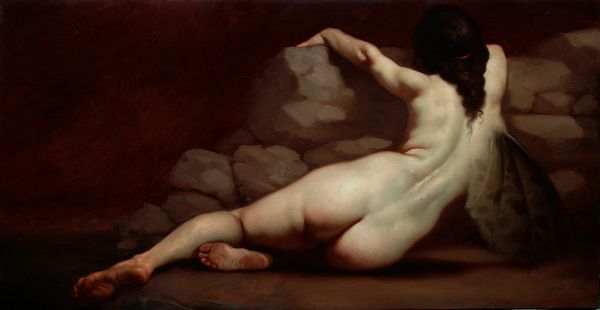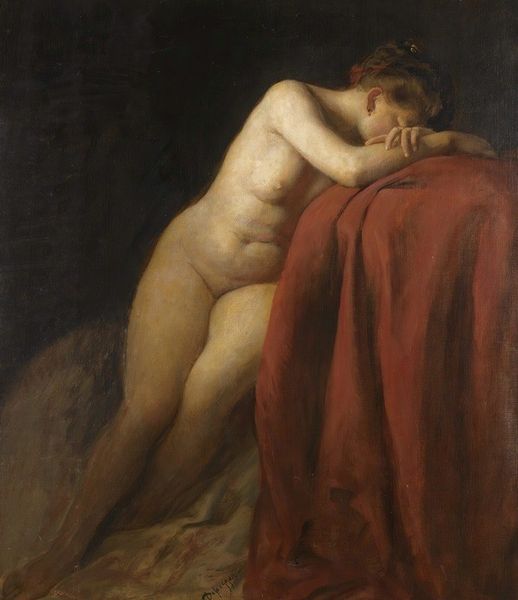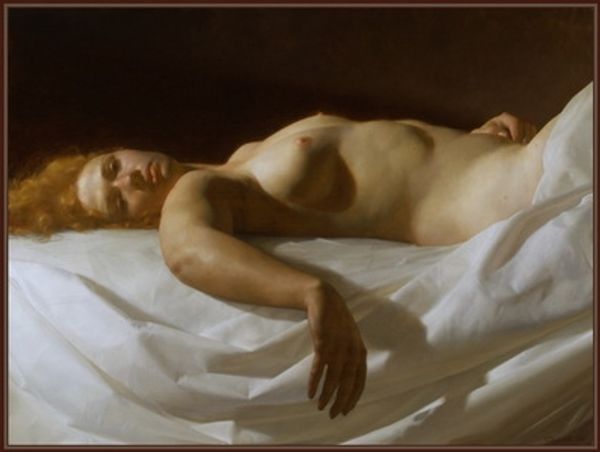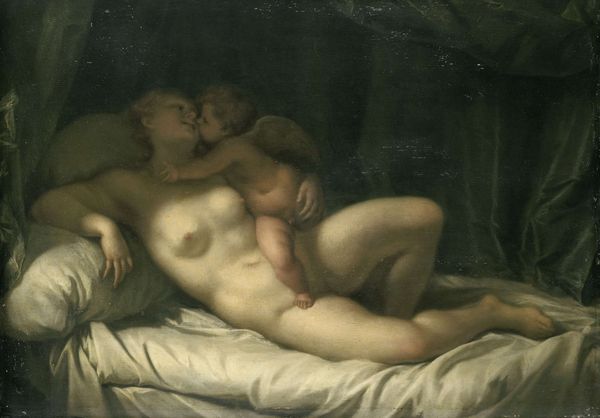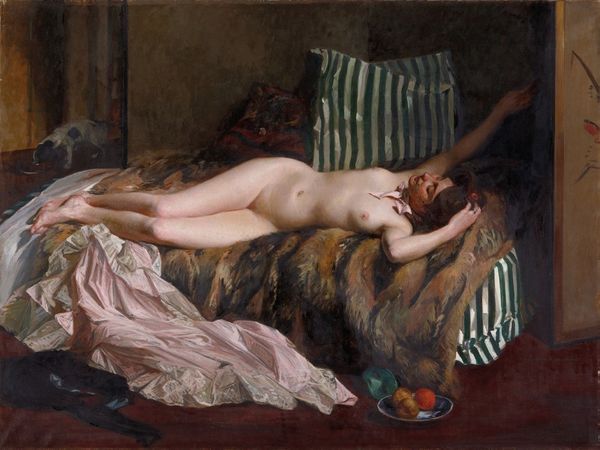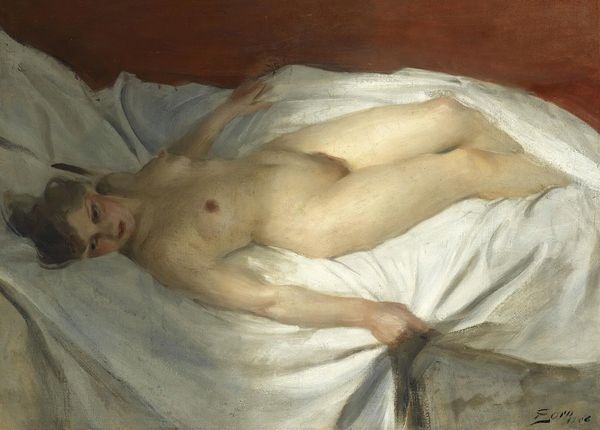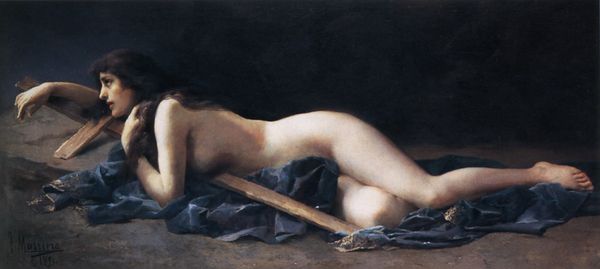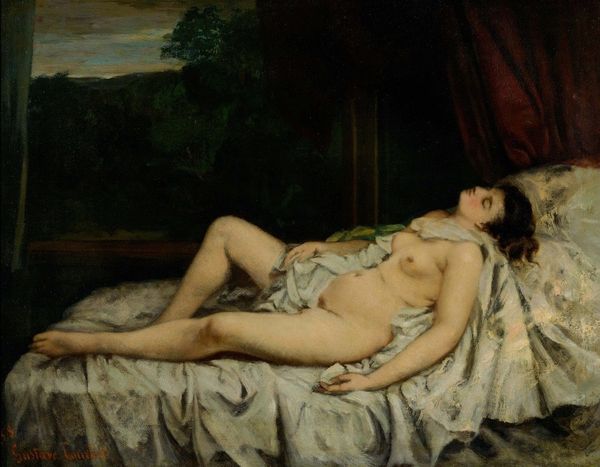
painting, oil-paint
#
portrait
#
gouache
#
painting
#
oil-paint
#
academic-art
#
charcoal
#
nude
#
realism
Copyright: Jacob Collins,Fair Use
Curator: We're standing before Jacob Collins's "Seated Nude," created in 2001. It's an oil painting that strikes a distinctly academic pose. Editor: My first thought is one of introspection, even discomfort. The figure is hunched, almost fetal. There’s a vulnerability there, like a secret whispered in a dimly lit room. Curator: Yes, there's a definite weight to her posture, a gravity in the slump of her shoulders. Collins, steeped in academic art, clearly engages with the nude not just as form, but as feeling. He masterfully plays with light, directing it to emphasize form, and almost forcing an encounter with her introspection. It is rendered with impressive realism and technique, reminding us of both historical ideals and today’s aesthetics. Editor: Right. Though classical nudes can often feel detached, almost sculptural, here Collins really captures something more immediate and relatable about the human form—the soft curve of her back, the delicate shading in her arm. In its intimacy, the piece really interrogates the male gaze within a historical and art-historical tradition saturated with exploitative and patriarchal depictions of women's bodies. It brings the body as subject, and subjectivity as experience. Curator: Precisely. The "Seated Nude" exists at an intriguing intersection, doesn't it? Collins takes on the established style while probing the emotional nuances of his model. What thoughts drift in that downcast gaze? The mystery feels utterly palpable, as if she were alive within this space. There is that incredible attention to skin tones as well, like a map that renders the subtleties of a person, more than an image. Editor: Ultimately, Collins asks a powerful question about the representation of bodies in art: Can one adhere to traditional forms while still honoring a nuanced sense of inner life? Her vulnerable posture feels far away from other renditions. Curator: Absolutely. It becomes a negotiation, I think, between reverence for the craft and sensitivity toward the subject. Editor: Well said. It’s a discomforting image that, paradoxically, is still able to encourage empathetic vision.
Comments
No comments
Be the first to comment and join the conversation on the ultimate creative platform.
